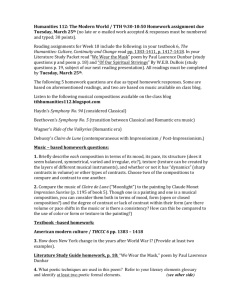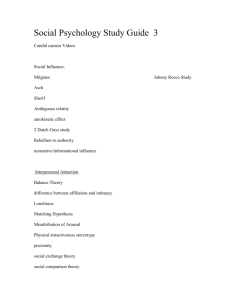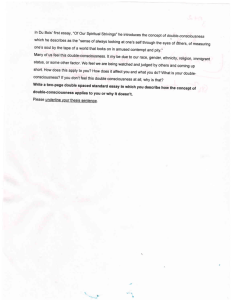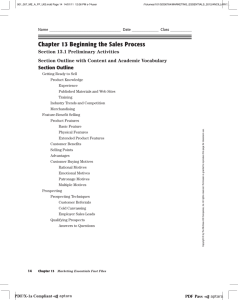Motives/Needs
advertisement
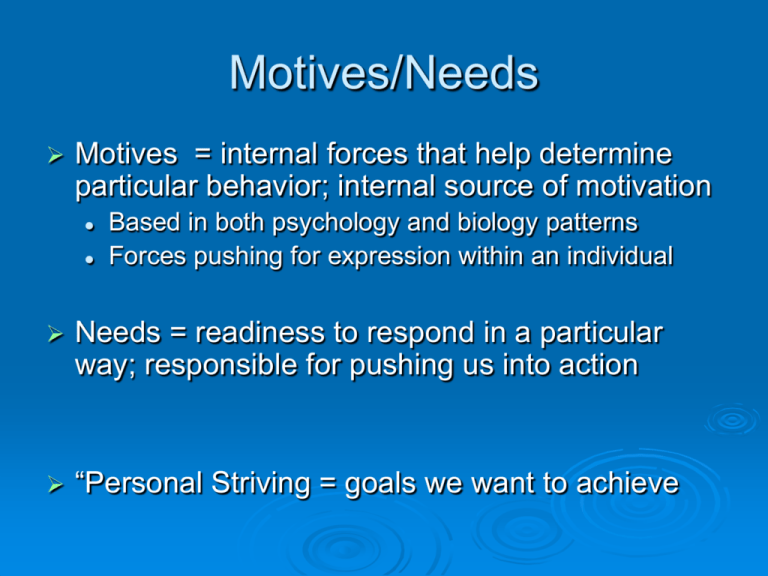
Motives/Needs Motives = internal forces that help determine particular behavior; internal source of motivation Based in both psychology and biology patterns Forces pushing for expression within an individual Needs = readiness to respond in a particular way; responsible for pushing us into action “Personal Striving = goals we want to achieve Basic Question What do people want? 4 approaches to answering this question 1. 2. 3. 4. Optimistic tradition Pessimistic tradition Neutrality diversity Optimistic tradition People are basically good People capable of rational thought Reason guides behavior People act in accord with conscious goals, which makes them happy Carl Rogers, Maslow – humanistic approach George Kelly and cognitive approaches Pessimistic tradition People are mainly bad and often miserable (because they want bad things) Behavior is motivated by irrational and bodily instincts Human reason is overrated E.g. Old Testament idea of original sin; Freud; evolutionary psychology Neutrality People (at birth) are blank and unformed Environment shapes goals and motives E.g. John Locke (tabula rasa); behaviorism; Skinner Diversity People want different things Different people have different goals E.g. Henry Murray; contemporary goal theories Henry Murray Needs – located within an individual Press – the environmental factors that impact the expression of needs Needs>>>Motives>>>> Behavior Childhood Press Resulting Motive Lack of companionship Desire to make new friends Family discord Desire to be comforted Friendships Desire to be nurturing Confinement Desire for freedom Needs are best understood as a personal hierarchy i.e. compare needs within an individual rather than across individuals E.g. friends having party night before exam • Need for achievement or need for affiliation – which is stronger? Important Needs (the Big Three) Need for achievement Need for intimacy/affiliation Need for Power Others: Need for autonomy, dominance, harm avoidance, nurturance, understanding, exhibition Need for achievement to achieve success – engage in task oriented behavior Doing things better than before or surpassing some standard of excellence (can be an internal standard or external standard) Correlates Need Need for Power Need to have an impact on other people, influence other people Strive to wield power and to feel more influential than others Correlates Need for Intimacy Motive to have close and warm relationships with others. (slightly different and more valid than Murray’s original need for affiliation = motive to spend time with others, to be involved in social relationships) Correlates Personal Strivings- Emmons Characteristics, recurring goals that a person is trying to accomplish Strivings are more specific than needs/motives and offer concrete information about a person E.g. person with need for power: “Persuading my daughter she should stay away from drugs” “Becoming president of the local school council” “Getting to the top of my company.” Personal Strivings About ½ of reported strivings fit into big 3 motive categories of achievement, power, and intimacy/affiliation. Other goals include: Avoidance “To avoid letting anything upset me.” Personal growth and health “To eat more vegetables” “To get in better shape” “To learn more about gardening” Generativity “To make a lasting contribution to society” Spirituality “To deepen my relationship with God” Correlates of personal strivings Intimacy& generativity strivings assoc. with independent ratings of psychological wellbeing. Power strivings & avoidance strivings assoc. with lower levels of well-being and higher levels of anxiety. Spiritual strivings assoc. with low levels of conflict among life goals.
